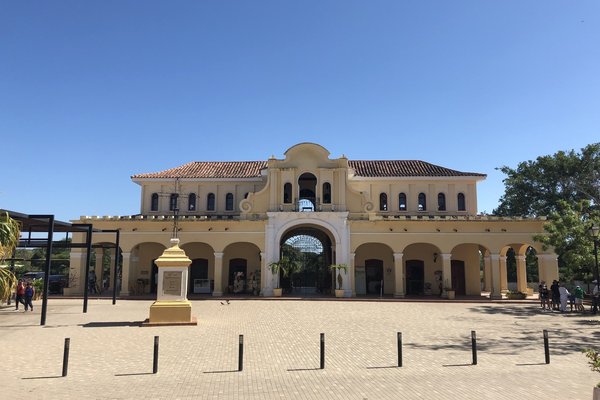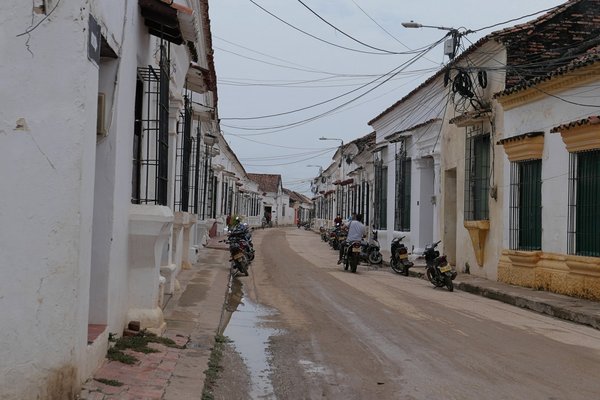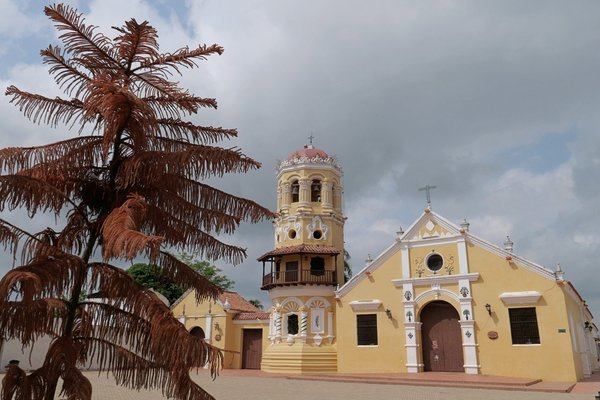Colombia
Santa Cruz de Mompox
The Historic Centre of Santa Cruz de Mompox represents a riverport from the Spanish colonial era.
The town connected the seaport of Cartagena with the interior via the Magdalena River. It further enabled Spanish colonization and the growing trade. In the nineteenth century, Mompox lost much of its economic importance: due to the lack of modern influences, the original Spanish elements such as churches, private houses and the street plan have been preserved in their authentic state.
Community Perspective: nowadays reachable by a 6.5h bus ride from Cartagena, but Mompox has been difficult to access before the 21st century – as described well in Solivagant’s review. The historic centre doesn’t take long to explore, but all reviewers so far enjoyed it for its lethargic atmosphere and historical significance.
Site Info
Official Information
- Full Name
- Historic Centre of Santa Cruz de Mompox (ID: 742)
- Country
- Colombia
- Status
-
Inscribed 1995
Site history
History of Santa Cruz de Mompox
- 1995: Inscribed
- Inscribed
- Type
- Cultural
- Criteria
- iv
- v
Links
- UNESCO
- whc.unesco.org
- Official
-
- colombia.travel — Mompox
All Links
UNESCO.org
- whc.unesco.org — whc.unesco.org/
Official Website
- colombia.travel — Mompox
Community Information
- Community Category
- Urban landscape: Colonial
Travel Information
Recent Connections
-
Perfect Inscriptions
1995 -
Chairs
The “Mompox Rocking Chair”. -
Octagons
Santa Barbara tower
Connections of Santa Cruz de Mompox
- Individual People
-
-
Visited by Alexander von Humboldt on his travels
Als der deutsche Forscher Alexander von Humboldt 1801 seine Südamerika-Reise unternahm, rastete er vom 25. April bis zum 5. Mai in Mompós. (wiki)
-
- Trivia
-
-
Total Solar Eclipse since Inscription
26 February, 1998 -
Built or owned by Spanish
The city was founded on May 3, 1537 by Don Alonso de Heredia as a safe port on the Magdalena. (wiki)
-
- History
-
-
Declarations of Independence
City Hall: it was here that on August 6, 1810 the Act of Independence from Spain was signed, and the cry "Ser Libres o Morir" ("Freedom or Death") was first heard.
-
- Architecture
-
-
Baroque
Santa Barbara Church, dome and bell tower -
Octagons
Santa Barbara tower -
Timber framing
Calle de Atras: "For the most part the buildings in this part of the town are more modest in size and decoration. They are timber-framed, with wall fillings of wattle-and-daub in the technique known as Bahareque." (AB ev)
-
- World Heritage Process
-
-
Perfect Inscriptions
1995
-
- Religion and Belief
-
-
Fortified religious buildings
"The churches also served as forts in the earlier years of the city."
-
- Human Activity
-
-
Gold production
Gold trade and royal mint -
River Ports
"The existence of Mompox as an intermediate river port on the main route from the port of Cartagena to the inter ior of New Granada provided the physical background for important cultural influences. " (AB)
-
- Constructions
- WHS on Other Lists
-
-
World Monuments Watch (past)
Historic Center, 2012See www.wmf.org
-
- Timeline
-
-
Built in the 17th century
Chosen because of its Qualities "The urban landscape and architectural components of santa cruz de Mompox achieved a high level of unity and harmony during the 17th-19th centuries," and "The "house-store" buildings which began to appear in the 17th century" (AB ev). The town was founded in 1540.
-
- WHS Names
-
-
Named after individual people
After its (disputed) founder, Juan de Santa Cruz, Governor of Cartagena (AB ev)
-
- Literature & Film
-
-
Works by Nobel Prize winning authors
Marquez (1982) - Chronicle of a Death Foretold
-
News
No news.
Recent Visitors
Visitors of Santa Cruz de Mompox
- Alberto Rodriguez Gutierrez
- Alejandro Lau
- Alexander Barabanov
- Ammon Watkins
- Atila Ege
- BaziFettehenne
- Daniel Gabi
- Els Slots
- Erik Jelinek
- Frédéric M
- Iain Jackson
- Jarek Pokrzywnicki
- Jawnbeary
- Joyce van Soest
- lichia
- Little Lauren Travels
- Loic Pedras
- Lucas Del Puppo
- Lucio
- Maciej Gil
- manuel011197
- Martin
- Michael Ayers
- Nihal Ege
- Patrik
- Rob Wilson
- Roger Ourset
- Roman Bruehwiler
- Solivagant
- Szucs Tamas
- Tamara Ratz
- Tevity
- Thomas Buechler
- Vanessa Buechler
- Zoë Sheng
Community Reviews
Show full reviews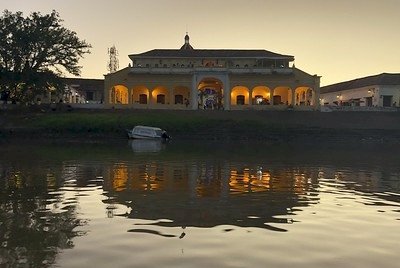
Mompox is a bit of a logistical nightmare (not the only one in Colombia). I studied different routes beforehand, but in the end, I couldn’t think of anything better than taking a bus there from Cartagena and taking the same one back 2 days later. The Unitransco bus turned out to be the most luxurious one of my Colombia trip – with comfy reclining seats, wifi, a toilet and no stops other than in 2 or 3 towns to pick up/drop off passengers. The ride took about 6.5 hours. Google Maps and maps.me totally lost track of the route in the maze of swamps and (former) islands, spitting out various incorrect times of arrival. For the last 1.5 hours, the bus takes a really minor road.
Colombia does not have many well-preserved Spanish-colonial remains. But Mompox surely is one of them. It was founded in 1537, less than 40 years after the first Europeans set foot on the South American mainland. Its historic center is beautifully restored and very cozy. It does attract its fair share of tourists, but it is geared more toward boutique-style visitors than toward backpackers or mass tourism.
When you say that the historic center of Mompox consists of only 3 streets, that seems like a very small area. But these streets are about 2km long and it took me 3 hours to cover it all (with some stops in between on a bench or on a terrace chair to recover from the heat). …
Keep reading 0 comments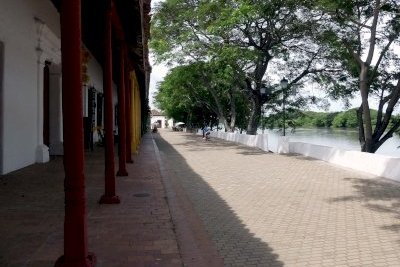
A major element in the attraction of Mompox has been its relative remoteness and difficulty of access. It is situated on Colombia’s largest inland “island”, Isla Margerita, and any visit to it involved a water journey using a ferry at Yati near Mangague to La Bodega (still 35kms by road from Mompox). And this ferry doesn’t just “cross” the river but takes a 40 minute voyage downstream and then up into a different arm of the Magdalena! This added to the mystique of reaching somewhere “up river” where things were “different” even if not quite the “Heart of Darkness”!!
We visited in Dec 2019, but Mompox is undergoing considerable change and its “remoteness” is being rapidly eroded. A bridge was built in 2006 at El Buton on the road from Bucamaranga to the South East. In Nov 2015 another new bridge was opened at Talaigua which permitted a complete road journey to/from Cartagena via La Gloria - longer in distance than the traditional route via the ferry but quicker and more certain! And more change is on the way – the route via Mangague is about to get 2 new bridges across arms of the Magdalena in what is a major infrastructure investment for Colombia. These are expected to reduce travelling time between Cartagena and Mompox from 5.5 to 3.5 hours. Luckily the opening of these had been postponed until Feb 2020 following the discovery of archaeological remains during the building of the approach road, and we were still …
Keep reading 0 comments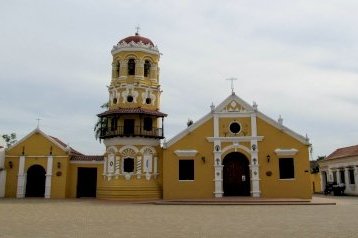
Although Mompox was an important and prosperous port upriver from Cartagena, it was never very large. It hasn't really grown and has a very relaxed and lethargic atmosphere. It's no wonder rocking chairs are popular here. We quickly took over a few of our own at a little cafe and just watched the river flow by.
Arriving in the early morning off an overnight bus, our first impressions of Mompox were not positive. Bus offices are at least a few blocks inland while the historic core runs parallel to the river and is only a few hundred meters long and about 2 blocks wide. Outside of this clean, preserved colonial core, Mompox is mostly a rundown and dirty village as far as we could tell. But the core is beautiful. The original buildings are also run down but in an atmospheric kind of way. There are three small plazas along the waterfront and the churches and old marketplace have been nicely restored. There are also boat tours along the river in the afternoon. Staying in one of the colonial homes rounds out the experience. This was the "quietest" and least developed of the major tourist sites we visited in Colombia.
Unless you really want to get lazy a day is easily enough to take in the sites. There are both early morning and overnight buses to Cartagena and we arrived on a direct overnight bus from San Gil that originated in Bogota so while it is still a …
Keep reading 0 comments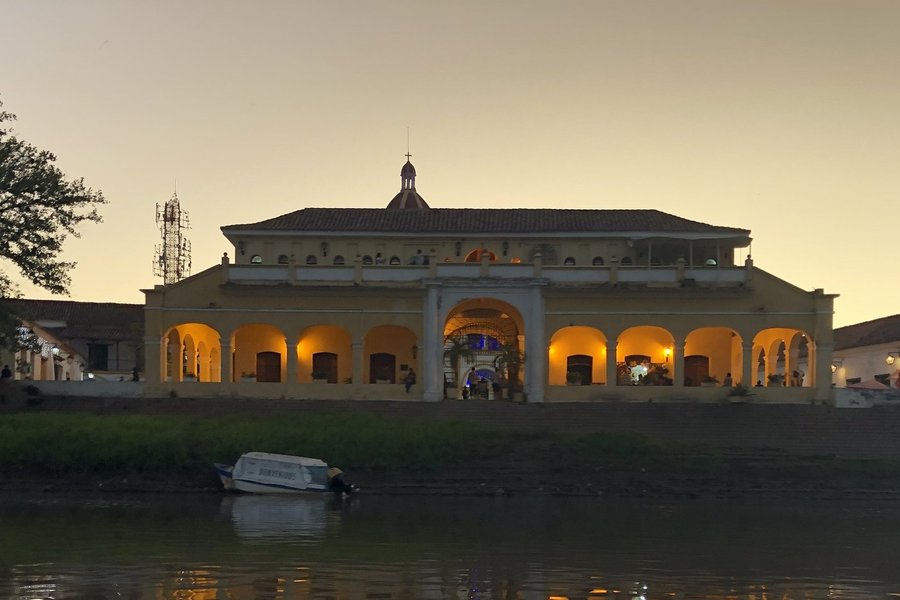
Cartagena, the masterpiece of the empire. At the same time, surraunded for pirates from England, and Holand. If you are a wealty, and aristocratic spaniard, living in Cartagena during the XVII-XVIII centuries, the smarter way to live in the area was moving to Mompox. An island in midle of the Magic Magdalena river, in midle of the rute to Honda-Bogota, and a shelter far away from Spain. Just the idea of Spain. Perhaps Seville was the model to build Mompox. One of the most magical Unesco Sites.
Seven churches. San Francisco church just an idea of baroche.
Breakfast at the marketplace. Arepa de huevo with an fresh orange juice in front of the river. You will love it.
The marketplace from the river...just divine.
Keep reading 0 comments
